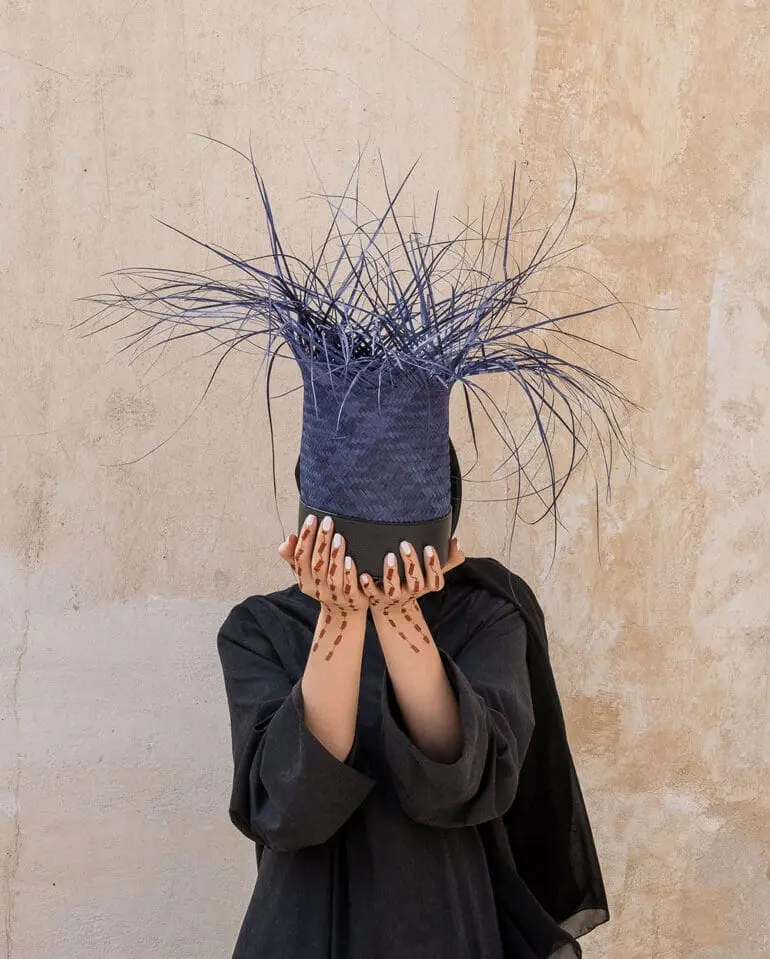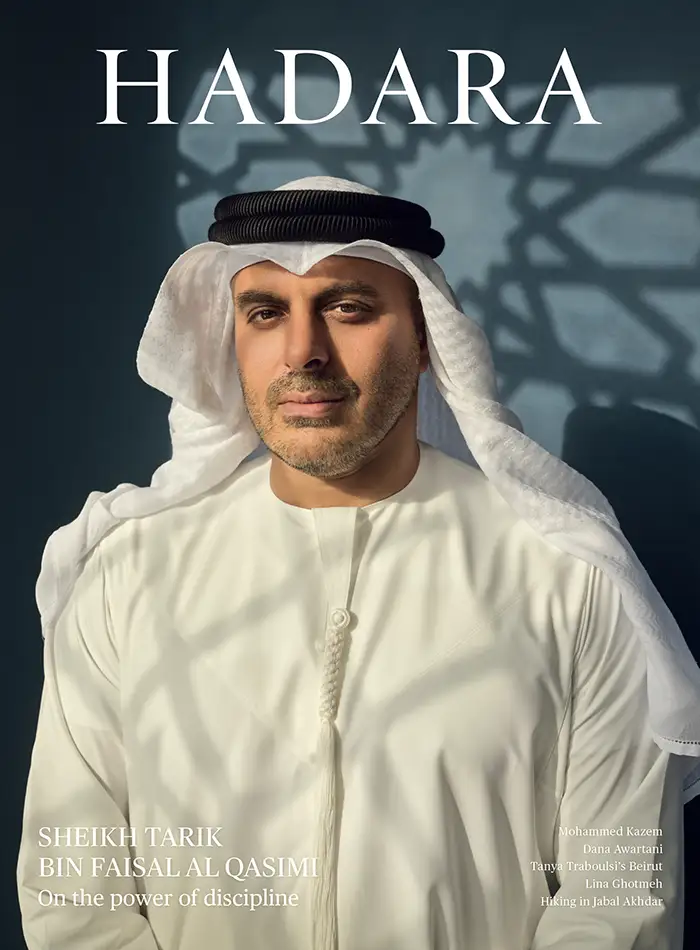In safe hands
Irthi Contemporary Crafts Council connects international designers with Emirati artisans for collaborations that weave traditional handiwork into contemporary pieces.
By Nicola Chilton
Stained with traditional henna patterns, Shaikha Sarhan Alduhoori’s fingers—and the threads they hold—move at a pace that’s too fast to follow. The spools dangling from the ends of the threads clack-clack hypnotically as they bump into each other. Alduhoori is weaving talli, a type of braid traditionally used to decorate the cuffs of women’s dresses, and recently recognised by UNESCO as Intangible Cultural Heritage.
The work is mesmerising. Alduhoori sometimes finds herself entranced by it, too. Even if she closes her eyes, her hands keep weaving, so accustomed are they to the movement. Next to her, Hadia Marzouq Rashid deftly weaves together the thin strips of sun-dried palm frond that form safeefah, a material typically used to make baskets, mats and other household items.
Alduhoori and Rashid are among the 248 female artisans participating in the Irthi Contemporary Crafts Council’s Bidwa initiative—and some 613 artisans in all—to promote the revival and modernisation of traditional crafts, and help female artisans find new markets for their skills. Irthi, created in 2015, works to empower women economically and socially by preserving and recontextualising indigenous crafts and products. That means linking up artisans not only in the UAE, but across the Middle East, North Africa, and South and Southeast Asia via collaborations and exchange programmes. Irthi also connects artisans with international fashion and furniture designers, who integrate the handicrafts into their products.
A world away from Sharjah city, the Bidwa Social Development Centre provides a space for vocational training, support and knowledge exchange in the small town of Dibba Al Hisn on Sharjah’s east coast. Squeezed between the mountains, the Gulf of Oman and the border with Musandam, life moves at a relaxed pace here. The air is clear and sharp, there’s a strong sense of community, but career opportunities are limited.
Five artisans have come to the Bidwa centre today. It’s a welcoming place, with spiced, milky karak, Arabian coffee and free-flowing conversation, there are comfortable spaces for the artisans to practice their crafts. Many learnt at an early age from female family members. As children, they had little choice, says Amna Saeed Abdalla. “Now it’s not necessary to learn,” she says. “That’s why it’s important that the Council exists to preserve these crafts.”
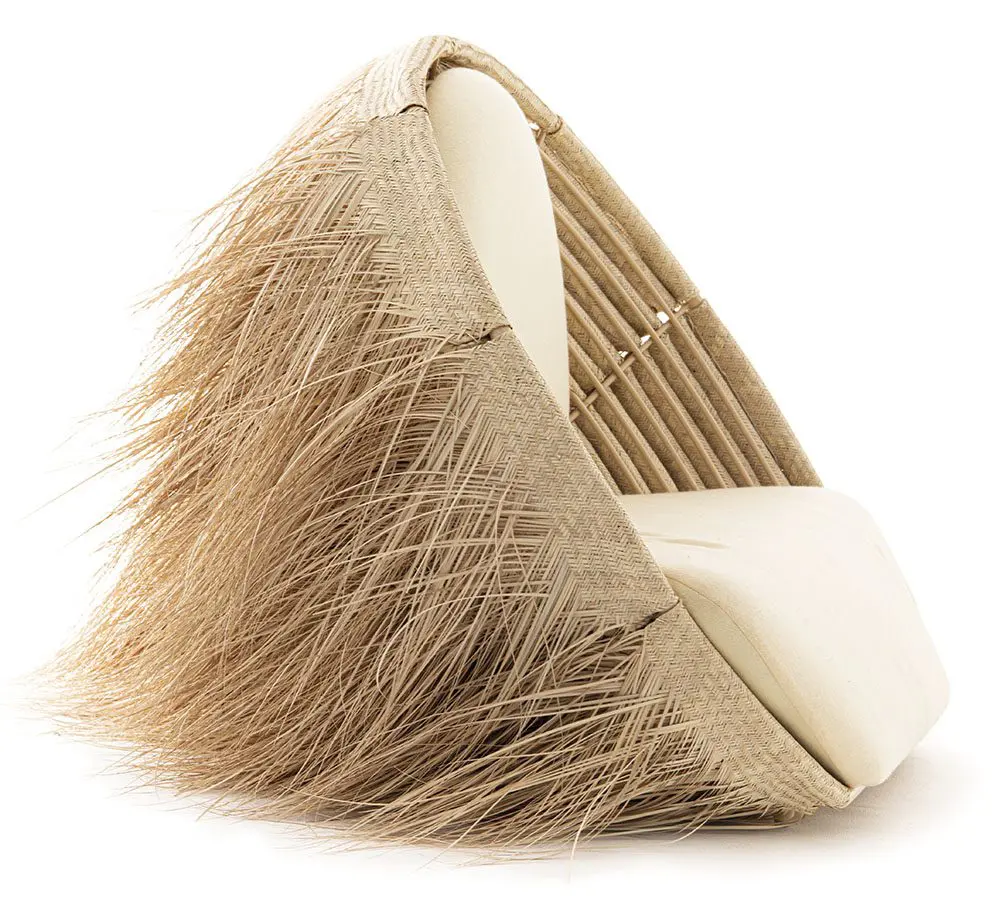
Top, Blue Phoenix, a collaboration with Emirati designer Ghaya Bin Mesmar. Above, Safeefah Chair, a collaboration with Mermelada Estudio and Ghaya Bin Mesmar, was part of the 2019 Crafts Dialogue collection.
Abdalla sits in a chair from Irthi’s Crafts Dialogue collection, a collaboration between Barcelona-based Mermelada Estudio and Emirati designer Ghaya Bin Mesmar, inspired by traditional areesh houses made from palm fronds. The chair’s curved back is covered in finely woven safeefah, parts of which were made by Bidwa member Hadia Marzouq Rashid. The style of weaving wasn’t new to her—Rashid already knew it from making circular water pot covers—but the detail and finesse of the weave was different. “When we find another modern use for our craft, more people become interested and want to come to the centre to learn,” Rashid says.
Farah Nasri, acting manager of curation and design at Irthi Contemporary Crafts Council, looks for ways to make the crafts relevant in today’s marketplace, and ultimately provide sustainable income to the artisans. “We’re trying to take the crafts out of the tourist realm and position them as handmade products with high-level finishing, something you would see at a gallery or a high-end store,” she says. “We look for brands or organisations that have similar values to ours, so if they are supporting craftsmen and women as their mandate, that’s an organisation we would love to support and work with.”
The Crafts Dialogue collection, debuted at London Design Fair in 2019, also included a collaboration between Emirati architect Abdalla Almulla and Spanish designer Pepa Reverter who worked with the artisans to create the Safeefah x Clay collection of stools and low tables. Intended as dining furniture, they resemble a decorative totem pole when stacked.
In 2021, Lebanese designer Nada Debs partnered with Irthi on the Zenobia collection of multifunctional vessels, pairing the work of wood and marquetry artisans in Lebanon with the talli of the Emirati artisans. The braid is woven directly into the wood, joining the narratives of the two artisanal communities.
“My artisans are always excited to work with new techniques, al- though it was challenging for them at first to weave fabric into solid wood,” Debs says. “At the end, they felt enriched by the process, it gave them a new sense of meaning to see their work brought to life and appreciated by a broader audience.”
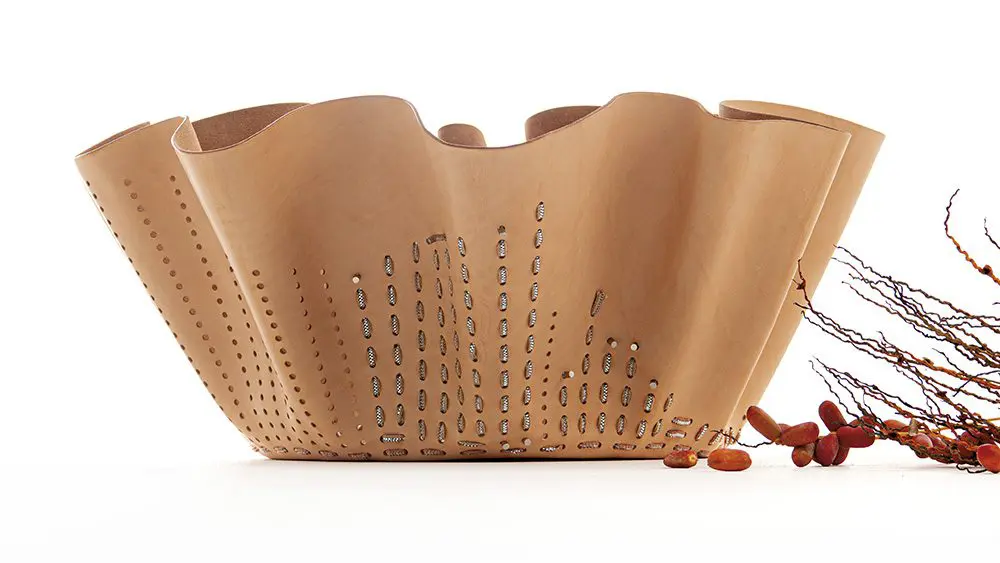
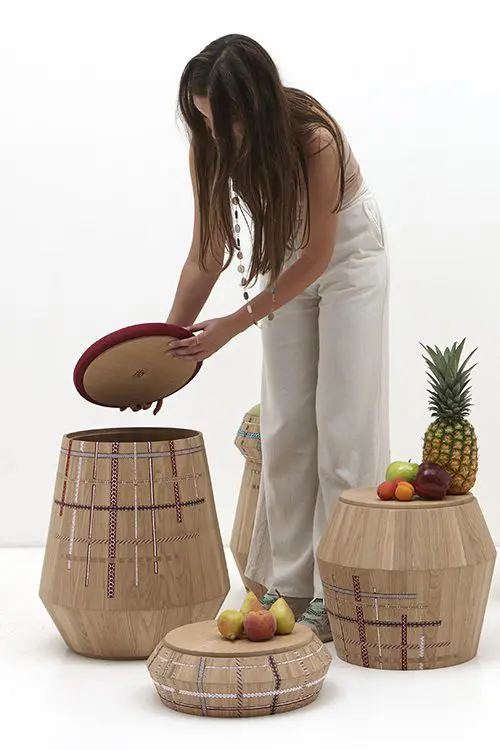
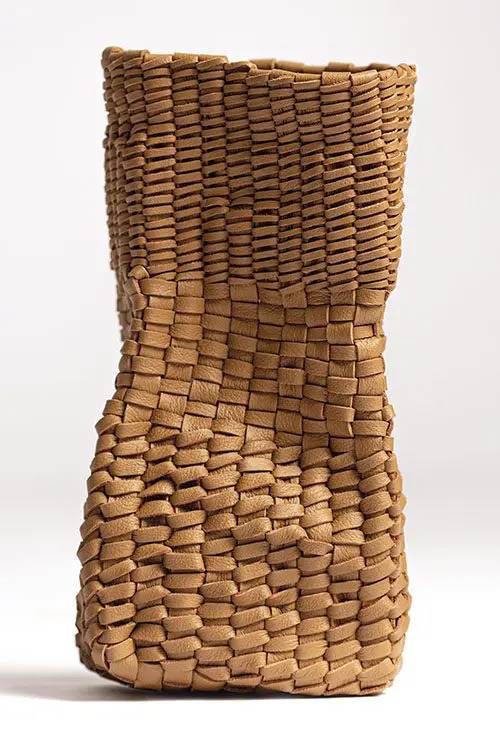
Clockwise from top, Fruit Bowl VI, Spanish leather and Emirati talli, a collaboration with Shaikha Bin Dhaher and Adrian Salvador Candela; Linear Bucket Bag, honey-coloured camel leather, part of the Design Labs collection; the 2021 Zenobia collection, a collaboration with designer Nada Debs.
Zenobia was part of a two-collection initiative, the Irthi Series, which brought the luxury of handmade crafts to a series of everyday items. It was launched at Design Miami/Podium x Shanghai that November. The other was the Thaya collection, centred on safeefah, which included collaborations with Peshawar-based artistic collective Studio Lél, Bahraini designer Hala Kaiksow, and a new collaboration with designer Ghaya Bin Mesmar.
The artisans currently produce over 90 different styles of talli, some classic, some contemporary, all made by hand. The classic patterns range in complexity from the single-strand talli, requiring six spools of thread and one khosa metallic thread, to the bait talli, requiring up to 50 spools and 20 khosa. It can take anywhere from three to 99 hours to produce one metre of braid. An additional series of experimental talli styles has been introduced to the artisans’ repertoire, incorporating materials such as rope, leather and baroque pearls, and complementary weaving techniques such as macrame and tricot.
Irthi has also worked to modernise safeefah. They colour palm fronds with natural dyes—purple from berries, orange from saffron and turmeric, browns and yellows from pomegranate peel—or leave strands unwoven to create a dramatic feathering effect. Artisan Mariam Ahmed Al Yammahi worked on black-and-purple cushions for the Safeefah x Clay collaboration, a new take on traditional colour schemes.
Irthi’s skills exchange programmes introduce crafts from the broader region. Amna Abdullah Mohammed Jumoh Alyahyaee is working on a piece that combines Palestinian cross-stitch embroidery with Emirati motifs. The youngest artisan in the room, she is preparing to study a master’s degree in law but finds the handiwork relaxing.
To increase appeal to a younger demographic—most of the women at the Bidwa centre are in their 50s and 60s—Irthi has co-created curricula with universities in Sharjah. And at Expo 2020 Dubai, Irthi launched an iPad game that teaches players how to weave talli and safeefah.
Collaborations are vital for the long-term survival of these crafts, says Debs, the Beirut-based designer. “By forging collaborations it challenges us as designers, and it challenges the artisans to keep pushing their heritage forward, showing new generations that they are not just preserving the past, but adding something in the present.”
Photos Courtesy of Irthi Contemporary Crafts Council

